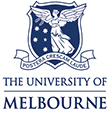Optimization of the preparation method of inactivated intact virus particle vaccine for COVID-19
Authors:
- Ohno, Marumi
- Sekiya, Toshiki
- Obeng-Kyeremeh, Richard
- Handabile, Chimuka
- Haruta, Minori
- Nomura, Naoki
- Kawakita, Tomomi
- Shingai, Masashi
- Kida, Hiroshi
Details:
Vaccine, Volume 56, 2025-05-22
Article Link: Click here
It has been recognized that it is difficult to maintain the virus particle structure of severe acute respiratory syndrome coronavirus 2 (SARS-CoV-2), which may be associated with lower immunogenicity of inactivated vaccines against coronavirus disease 2019 (COVID-19). We have previously demonstrated that an intact structure of the virus particles is critical for influenza inactivated whole virus particle vaccine (WPV) to be immunogenically potent. Here, we tested 37, 35, 33, and 31 °C for the virus propagation temperatures and the timing of formaldehyde treatment of the virus before and after centrifugation-based purification to obtain virus particles with an intact structure. Virus particles cultured at 33 °C retained spike proteins on the surface the most abundantly. The pretreatment of the virus with formaldehyde prevented the dissociation of the spike proteins from the viral surface during the centrifugation-based purification. The immunogenicity of the prepared vaccines, intact WPV and non-intact WPV that had lost the spike proteins, was evaluated in a mouse model. A single dose of intact WPV effectively induced humoral immunity compared to non-intact WPV, as indicated by higher titers of neutralizing antibodies. After a virus challenge, the mice vaccinated with a single dose of inactivated intact WPV showed less severe weight loss and lower virus titers in the lungs compared to those vaccinated with non-intact WPV. These results demonstrate the importance of the structural integrity of WPV in inducing effective and protective immunity, and provide significant insight into the development of COVID-19 WPV for practical use.


